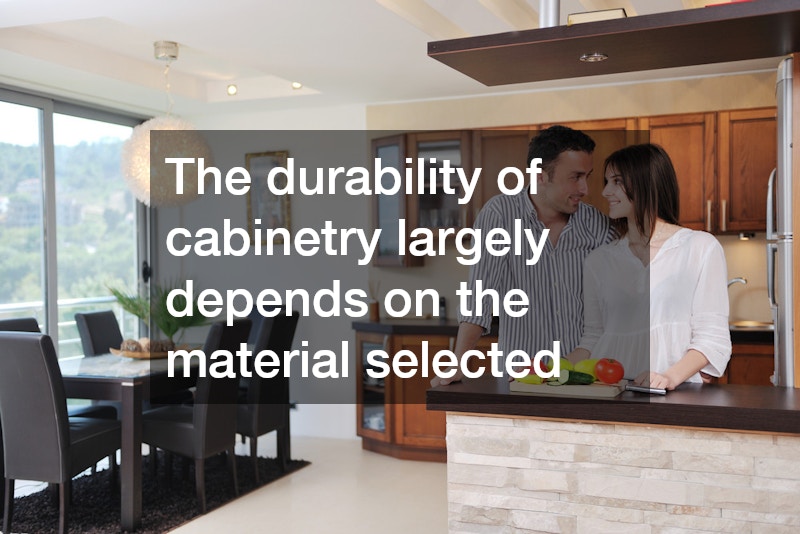Choosing the right material for your custom cabinetry is an essential decision that directly impacts functionality, aesthetics, and overall satisfaction in your living space. With a myriad of materials available, understanding the advantages and drawbacks of each option can be overwhelming.
The Most Popular Cabinetry Materials
One of the most traditional choices for cabinetry is solid wood, revered for its beauty and intrinsic strength. Various species of wood, such as oak, maple, and cherry, offer different grains and colors, enabling a wide range of design possibilities.
In addition to solid wood, engineered woods like plywood and MDF (Medium Density Fiberboard) are popular alternatives, offering stability and often a more economical choice without sacrificing style.
Another popular material is laminate, which can mimic the look of natural materials at a lower cost. Laminate sheets are available in a plethora of colors and patterns, making it easy to customize your cabinetry to match your home’s décor. On the modern side, metal cabinetry is gaining popularity due to its sleek appearance and durability, suitable for contemporary kitchen designs.
Choosing the right material often comes down to the specific needs of your space, including the design aesthetic you aim to achieve and whether you prioritize durability, maintenance, or budget constraints. Each material has its unique characteristics that can profoundly affect both functionality and appearance in your custom cabinetry.
How Material Choice Impacts Durability
The durability of cabinetry largely depends on the material selected, with solid wood being known for its long lifespan and resilience when properly maintained. Wood can endure significant wear and tear, making it ideal for high-use areas, though it may be susceptible to moisture damage without adequate sealing. Conversely, engineered woods, such as plywood, can offer added stability and resistance against warping and shrinking.
Laminate cabinetry typically boasts excellent resistance to scratches and stains, which enhances its longevity in busy kitchens. The non-porous surface of the laminate means that it is less affected by humidity and other environmental factors. Metal cabinets, while durable against impact and easy to clean, can be prone to dents or scratches, and their suitability depends on the specific application and environment.
When selecting the material for your custom cabinetry, it’s crucial to consider not only the immediate aesthetic but also how the material will hold up over time. A thorough understanding of the durability linked to each material can help you make an informed decision that supports your daily lifestyle while enduring the test of time.
The Aesthetics of Different Cabinetry Materials
Aesthetically, the material you choose for your custom cabinetry can dramatically alter the overall look and feel of your space. Solid woods offer natural warmth and character, with variations in color and texture that infuse personality into your interiors. Each species brings its distinct charm and timeless appeal, often becoming a focal point in traditional or rustic designs.
Laminate provides an opportunity to explore bold colors, patterns, and finishes that can be tailored to reflect personal style creatively. It opens new avenues for artistic expression, including high-gloss finishes and textured surfaces that can elevate modern and eclectic spaces. On the other hand, the sleek, industrial finish of metal cabinetry can contribute a contemporary flair, making it a favorite in urban, minimalist designs.
Regardless of the desired aesthetic, understanding how each material influences the visual narrative of your cabinetry will ultimately help you create a cohesive look that aligns with your personal design preferences. Striking a balance between style and practicality will enable you to enjoy cabinetry that not only meets functional requirements but also enhances the beauty of your home.
Maintenance for Cabinets Made With Different Materials
Maintenance considerations play a vital role in the choice of cabinetry materials, and different options come with varying requirements. Solid wood cabinets will need periodic refinishing and care to maintain their luster and prevent issues like warping due to moisture. Regular cleaning with appropriate products is essential to keep the surfaces looking pristine without damaging the finish.
Laminate is typically low-maintenance, requiring just simple cleaning with a damp cloth and mild detergent. Its non-porous nature means it won’t absorb moisture or stains, making it an excellent choice for busy families. Metal cabinetry also tends to be easy to clean, though care must be taken to avoid scratches or corrosion, especially depending on the finish used.
Ultimately, the maintenance levels associated with each material should align with your lifestyle and willingness to put in the required upkeep. Understanding the expectations of your cabinetry can help you choose a material that suits not only your aesthetic preferences but also your approach to home maintenance.
Choosing the right material for your custom cabinetry involves understanding your options, considering durability, budget, aesthetics, and maintenance. Each material presents unique characteristics that contribute to the overall design and functionality of your space. By following these guidelines, you can make an informed decision that fits your needs and style, ensuring that your cabinetry remains a beautiful and functional component of your home for years to come.

